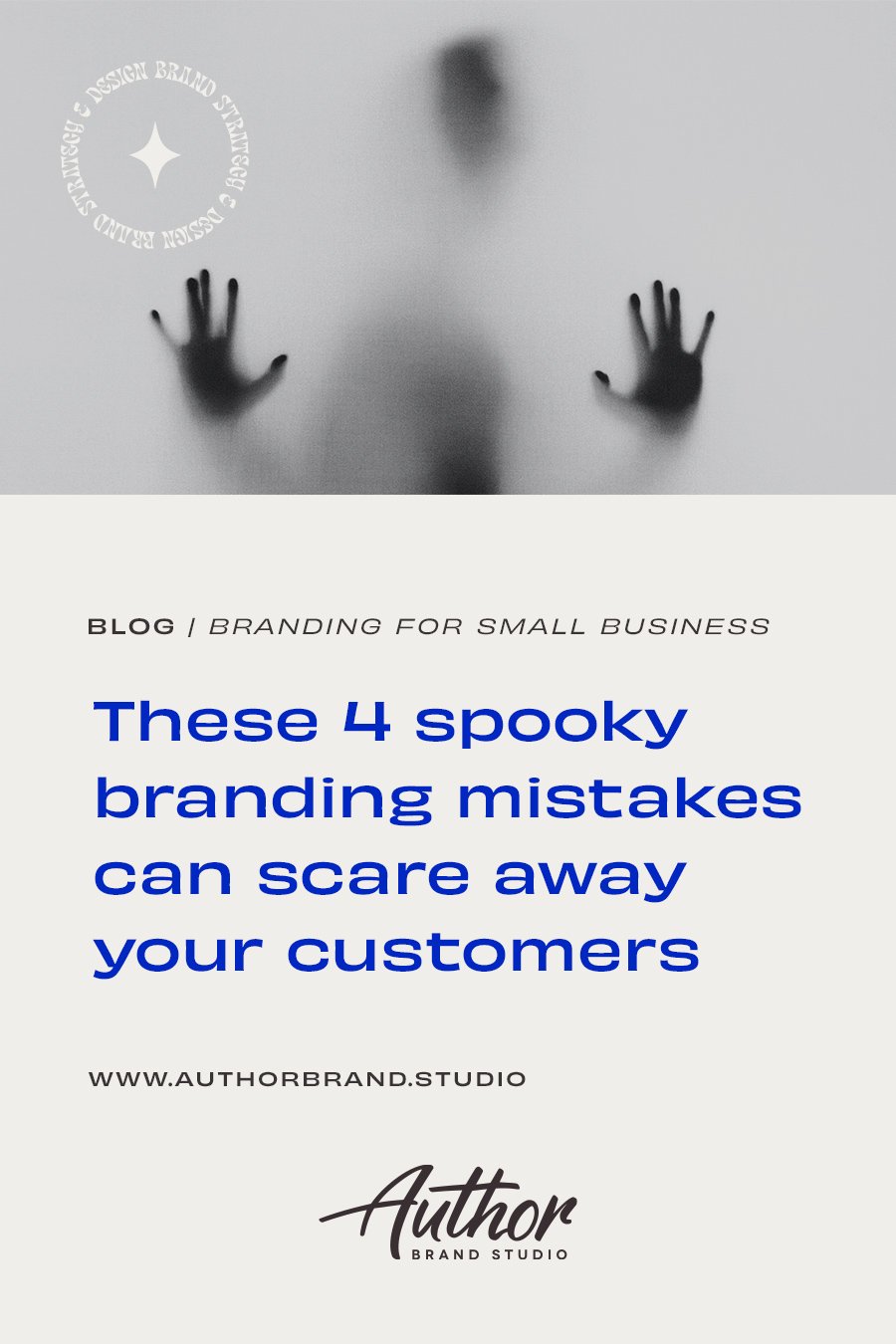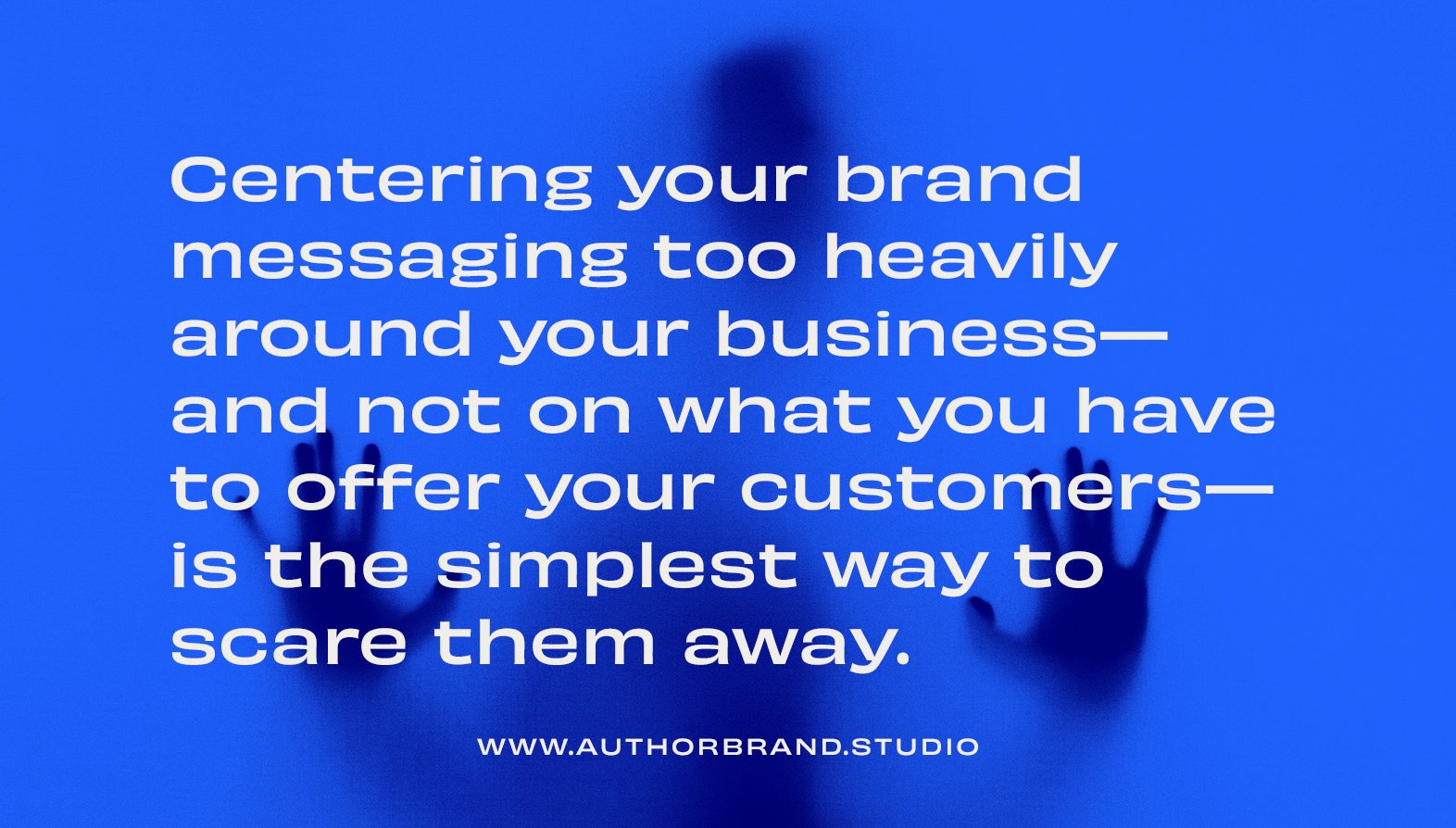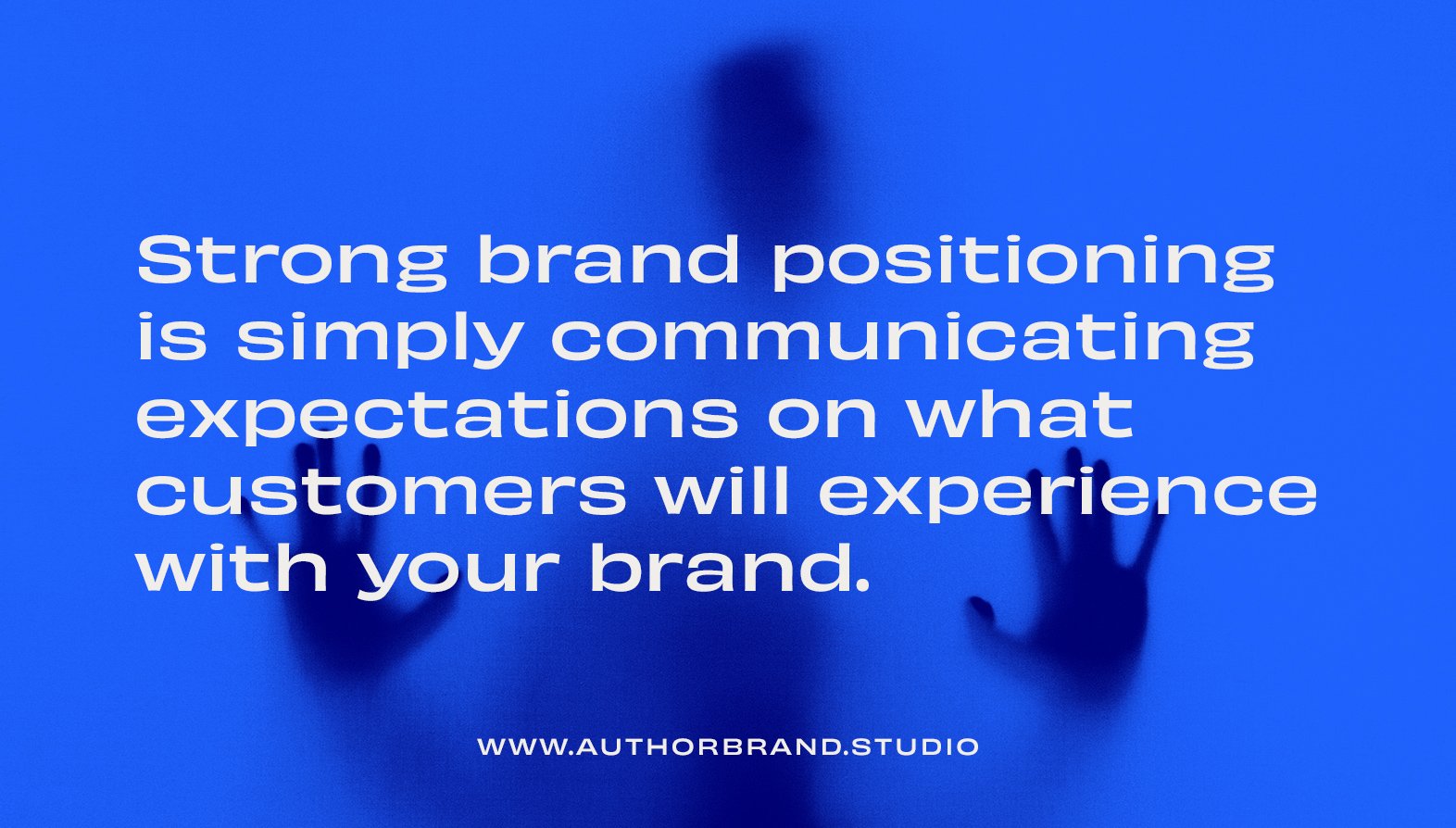These 4 spooky branding mistakes can scare away your customers
It’s officially “spooky season,” aka Halloween!
I’ll be honest, I’m not a big Halloween person. Of course, every year our corgi Winston dresses up in his very best costume to celebrate the occasion; but beyond that, our home is spook-free in October.
However, in the spirit of the season, we’re diving into something that’s even more frightening than a 20-foot-tall skeleton lawn decoration (I’m looking at you, neighbors):
Scaring off potential customers by making simple, common branding mistakes.
Nothing is worse than getting ghosted by clients, or sending customers off screaming into the night (not literally—please don’t actually do that). But when this happens—and it happens to every business—instead of blaming it on “they just weren’t a good fit” or “well, they didn’t try to understand what I have to offer”, we ought to look into the mirror, mirror on the wall and ask if this was our fault at all.
As easy as it is to send shivers down your customers’ spines with simple branding faux-pas, don’t sweat it: luckily, the solutions are quite simple!
Let’s dive into these 4 common branding mistakes that spook your customers:
1. Your brand messaging isn’t customer-centric: it’s all about you.
One of the most common branding mistakes I see new businesses make is to think that their customers want to learn all about them.
“We opened our doors in 2017 and have been serving customers in our local area ever since.”
“Our founder’s grandfather started this business in 1958.”
“We are passionate about providing our customers with the best possible service.”
Every time a potential client or customer lands on your website, imagine that you’re taking them on a date. We’ve all been there: you meet a friend of a friend (or you swipe on the latest dating app), you meet up for a Sunday morning coffee date…and he talks about nothing. but. himself. His family. His hobbies. His job. His favorite bands. You yawn, coffee growing colder, waiting until it’s polite enough to make up an excuse to leave.
You guessed it: every time your business talks about itself too much, your customers are feeling the exact same way. Studies show that emotions play the strongest role in purchasing decisions, and when we focus on providing information above making emotional connections with our audience (brand messaging that focuses on their wants and needs), we can scare those potential customers away.
Centering your brand messaging too heavily around your business—and not on what you have to offer your customers—is the simplest way to scare them away.
Fortunately, all it takes to turn “happy haunts” into “happily-paying customers” is a simple shift. Rethink your brand messaging strategy to not just talk about your business less, but to truly hone in on who your customers are and how your offerings make a difference in their lives. Develop a winning brand voice that feels authentic to your brand and approachable to your audience. By flipping the script, you can attract and win over those customers instead of sending them running.
2. You’re ghosting them along their customer journey
I’m really not one for corn mazes.
The thought of willingly waltzing into a field just to grapple with anxiety and stress in navigating my way out again doesn’t sound like a fun time to me. I’ve never enjoyed feeling lost, unaware of my surroundings, unsure of what’s next and what’s going on in the outside world.
This is exactly how your customers feel when you ghost them along their customer journey.
Your customer journey is the process a client or customer goes through in their brand experience with you. It begins with their very first impression of your brand (for instance, landing on your Instagram profile) and carries through their experience on your website, the purchasing process, order/service fulfillment, and so on until advocacy, where they tell others about your brand. Every brand large or small has a journey they take their customers through, and unless this journey is carefully crafted, there are often significant gaps through which they can fall.
Ghosting your customers along their customer journey—leaving gaps in your brand experience for them to fall through—can send even the most loyal ones running.
One of my earliest clients’ services required a long lead time between an order being placed and that order showing up at the customer’s doorstep, which unfortunately left her customers in the dark for several weeks. After identifying this gap in her customer journey during her brand strategy workshop, we resolved it with an automated email sequence that would send her customers insights into the fulfillment process and reminders that their order wasn’t forgotten. This simple step, which required no extra time on my client’s part, would keep her in continual communication with her customers and improve their experience with her brand.
Unfriendly customer service, scant information about your standard processes or policies, or lack of communication with paying customers are all common brand experience mistakes that can send people packing: but thankfully these and other gaps in a brand’s customer journey can be easily filled. Analyze your current customer journey, listing out every point of interaction someone has with your brand, and ask if there are any stages where a customer can get ghosted, lost, or confused. Put yourself in their shoes and consider simple, perhaps automated, ways to enhance the experience a customer has with your brand.
3. Your brand is too vague
Everyone remembers that old lady down the street who always gave out raisins instead of candy on Halloween. Or their best friend’s mom who always gave out the cool candy (which were Ring Pops or Fruit Roll-Ups for us ‘90s kids).
If your brand isn’t standing out from the crowd, you’re like all the other houses handing out generic candy bars during a crisp trick-or-treat evening: still nice, but relatively forgettable by comparison.
Branding can be summed up as the answers to three simple questions:
What you do;
Who you do it for;
Why it matters to them.
However, as simple as these questions may seem, they can actually trip up a lot of new entrepreneurs. They may start their business with a killer mission and purpose, but asked to articulate what they deliver to their customers, they stall and stammer their way through a few ideas. Or they may have an amazing product or service but play it safe with generic brand messaging or lackluster branding that sounds just like everyone else in the market.
If you can’t articulate what makes your brand different: neither can your customers.
Vague branding that doesn’t clarify what you do, who you do it for, and why it matters to them will send potential customers running faster than the Headless Horseman at midnight. We may need to be exposed to a potential brand up to 7 times before we even recognize and remember it! If any of those exposures are vague and forgettable, your customers may very likely turn to the next house on the block that does offer the “cool candy.”
Building a memorable brand is more than just a trendy brand design or even killer brand messaging. It starts and ends with brand clarity: giving your customers the one thing your brand is known for, the one product or service nobody else offers like you do, the one impact your product or service can have on their life.
If it feels like potential customers are running like screaming banshees away from your business, it’s time to make a bigger impression on them. Give your brand a month-by-month refresh in the new year, or hire a professional to help identify what makes your brand unique and craft a strategy for communicating that to your audience (hey, that’s what we do!).
4. Your brand positioning is a poor reflection of your business
Let’s just call it for what it is:
Stop putting Gucci prices in a Spirit Halloween store.
(No hard feelings against Spirit Halloween, by the way.)
Your brand positioning is the role your brand plays in the marketplace. Specifically, it’s reflective of how you want your customers or clients to perceive your brand. It truly guides not only your brand experience, your visual brand identity, and your brand messaging strategy, but it also should inform your pricing strategy, customer experience, and much more.
However, brand positioning is a tricky tactic to nail down. Often entrepreneurs are too deeply involved in their own business to see their brand from an outside perspective, and so they feel confused or frustrated when the wrong kinds of clients come their way or customers routinely tell them their products are “too expensive.”
When a customer or client misunderstands your offerings or your pricing, usually poor brand positioning is to blame.
It’s easy to spook a potential client or customer when there is a breakdown between how you think your brand is positioned and how it really is positioned. You may think that your brand is positioned as high-end, but you receive regular objections to your pricing. Or perhaps your DIY brand identity design is scaring off big-ticket clients so your only inquiries are budget-hunters.
Before I begin to sound like a snob, let me clarify that there is no right or wrong brand positioning! Despite poking fun at Spirit Halloween, there’s a reason they’re a major national retailer: they make it clear they’re the wallet-friendly, inventory-packed option for any costume imaginable. Not every brand can—or should—be branded as high-end, luxury, and exclusive. Your brand positioning should be reflective of what your brand truly is, what it truly has to offer, and should send signals on what your customers or clients can expect from your brand.
Strong brand positioning is simply communicating expectations on what customers will experience with your brand.
Brand positioning can be one of the most difficult aspects of your brand strategy. If your brand positioning is spooking your dream clients or customers away, optimize your brand experience to increase their chances of saying “yes” to your brand. Take an honest look at the first impression your brand is making and assess whether it feels aligned with your pricing strategy. Make notes on the objections or feedback you receive from your audience to identify where they’re misunderstanding your brand.
This Halloween, let the other 999 happy haunts do the spooking. If unforgettable branding or ghosted customers are haunting your business success, we’re here to help. Schedule a free call today!






